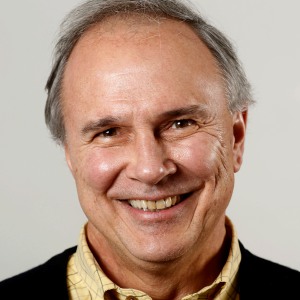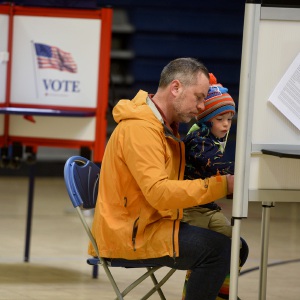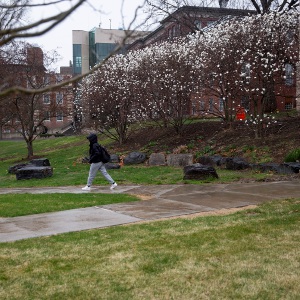Colby-Sawyer Eliminates Five Majors to Stay Afloat
| Published: 12-14-2016 3:34 PM |
New London
Before cutting seven faculty members and 11 staff members, eliminating 19 open positions and changing 11 more employees’ hours, Colby-Sawyer President Sue Stuebner, who arrived this summer amid a multimillion-dollar, three-year budgetary shortfall, had to take stock of the college’s financial and academic standing.
Colby-Sawyer, a liberal arts college with pre-professional offerings, has a $38 million endowment but spends roughly twice that in annual operating costs. That makes the school dependent on tuition to pay its bills, Stuebner said, while at the same time having to heavily discount its $54,000 annual tuition in order to maintain enrollment.
Colby-Sawyer’s enrollment peaked four years ago at about 1,500 students, and since has sunk to about 1,100, even as it retained the extra faculty and staff needed to support the greater enrollment.
Meanwhile, the national output of high school graduates has begun to stagnate, and so have middle- and working-class wages and the rate of applications to college.
Liberal arts colleges, which aim to give students a broad base of knowledge rather than a specific technical skill, are feeling pressure to make the case for their existence, Stuebner and other education experts said this week.
“It’s that hard, hard question of, as a small institution, being able to identify where we can do really well (and) where there’s interest,” Stuebner said in an interview on Wednesday.
That reassessment has prompted some other adjustments.
Article continues after...
Yesterday's Most Read Articles
 Kenyon: Dartmouth alumni join union-busting effort
Kenyon: Dartmouth alumni join union-busting effort
 Hartford voters approve school budget and building repair bond
Hartford voters approve school budget and building repair bond
 Starbucks store planned for Route 120 at Centerra
Starbucks store planned for Route 120 at Centerra
 Local Roundup: Hanover pitcher throws a perfect game
Local Roundup: Hanover pitcher throws a perfect game
 Parker up for parole more than 2 decades after Dartmouth professor stabbing deaths
Parker up for parole more than 2 decades after Dartmouth professor stabbing deaths
“I don’t think we’re going to be, unfortunately, known as the place for English majors, for example,” Stuebner said.
Unmentioned in the college’s announcement of a restructuring this week were its impending cuts of five majors: English, philosophy, accounting, health promotion and health care management.
Kate Seamans, a spokeswoman for the college, said the elimination of the majors had come as a response to financial realities and had been based on student enrollment in each branch of study.
Stuebner said administrators had notified students whose majors were affected, and that current students would be able to finish their majors.
“As a school based in the liberal arts and sciences, it’s hard to do away with anything,” she said.
Stuebner said there still would be “many English courses to take,” and an English minor also might be available. There also remains a creative writing major, she said.
Feeling the Pressure
Colby-Sawyer College is far from alone among liberal arts institutions in feeling pressure to distinguish itself in the market, experts said this week.
Robert Oden, a former president of Carleton College and Kenyon College who lives in Hanover, said that parents and students were coming more and more to expect an “immediate, tangible, practical, measurable payoff.”
In recent years, he noted, rankings have popped up that measure colleges’ success based on their students’ return on investment.
“We all think — and we’re right, actually — that we’re educating our students to live an engaged and fulfilling life ... but there are various times in our history that Americans have said, ‘Well, maybe, but what job did you get and how much does it pay?’ ” he said.
Oden added, however, that he wasn’t concerned about the growing demand for a practical payoff.
“It’s something that we all have to reckon with,” he said, “but it doesn’t worry me because I’m a student of the history of higher education.”
The greatest pressure on the liberal arts, he said, came in the 1820s, when many people believed that the ongoing Industrial Revolution would require technical and scientific expertise of college graduates — and less so the more general offerings of the liberal arts.
Later, in the 1860s, many liberal arts colleges closed and were forgotten.
On the question of whether Colby-Sawyer would survive, rather than join those ranks, Oden said, “I do know enough to say yes. It’s a highly regarded liberal arts college that has discovered a niche that distinguishes it.
“In my view they have an extraordinarily smart and attractive niche,” he said. “They are a liberal arts college, but they also offer professional programs,” including its nursing program, which Oden said he had become well acquainted with as a board member of the Dartmouth-Hitchcock health system.
Stuebner saw Colby-Sawyer’s identity in much the same way.
“It’s the integration of the liberal arts and the pre-professional through those experiential opportunities that really makes us unique,” she said.
Stuebner cited several hands-on offerings, including a sustainability program in Franklin, N.H., where students carry out projects to revitalize the environment around the Franklin Falls Dam; a course where business majors invest real money; a lab school for students of early childhood education to practice with children in pre-K; and the opportunity for nursing students to obtain working experience at Dartmouth-Hitchcock.
Campus Reaction
Professors and students on Thursday offered a wide range of reactions to the news of the retrenchment, most of them optimistic, though all tinged with concern.
“We’re a liberal arts school,” said Kathryn Kincaid, a sophomore majoring in multidisciplinary studies, with a focus in art history. “How can we not have an English major?”
Kincaid said she was concerned about the college’s future, given the cuts she said had been made to her department. “It’s daunting to think about,” she said.
Kristin Lambert, a senior majoring in graphic design, was more sanguine, even though she lamented that some of her art professors had lost their jobs.
“I think we’re going through a rough patch,” she said. “Even though they’re cutting majors, I’m confident that they’re going to add other things.”
All the same, she recognized the symbolism of the English major’s elimination, and said that the school may change in the future.
“Maybe in 10 years, Colby-Sawyer won’t be a liberal arts college,” she said.
Eric Boyer, an associate professor of political science at Colby-Sawyer, said that the fallout from this week’s layoffs actually was an indicator of Colby-Sawyer’s strengths, and not just its weaknesses.
“A lot of schools that look like ours are having this problem,” he said. “How does one make the story about quality in an era of choice and ease?”
Whereas other schools resort to hiring cheap, disposable adjunct faculty, Boyer said, Colby-Sawyer employs mostly tenure-track professors who teach students directly.
Institutions like Colby-Sawyer, he said, “can’t just quietly shed a bunch of adjuncts by not renewing their contracts.”
“That’s why it hurts,” he said. “Because of the strengths of the community, the strong bonds we’ve created, faculty to student, student to faculty.”
In the humanities department, which lost two central majors this week, professors and staffers on Thursday declined to comment to the Valley News, saying they had been instructed to forward requests to the college communications department.
Paul LeBlanc, president of Southern New Hampshire University, said in a Thursday interview that Colby-Sawyer had positioned itself well, compared with other liberal arts schools feeling the same pressures.
The nation’s annual high school graduating class peaked in 2013 at about 3.5 million students, and is not expected to reach that number again until 2024, according to a recent study from the Western Interstate Commission for Higher Education.
Aside from dealing with the demographic hurdle, LeBlanc noted, schools have to account for students’ increased worries about taking on debt, as well as “a lack of confidence that a degree necessarily leads to a well-paying meaningful job, where that was once a given.”
“It’s sort of no one’s fault, but I think it inherently makes a school like Colby-Sawyer, which I think is a fine school, more vulnerable,” he said.
LeBlanc, who at SNHU has presided over a major expansion in online course offerings, preached the gospel of business diversification in Thursday’s interview, saying that branching into more programs would help schools differentiate themselves and attract students.
“If you have more lines of business, you have more organization resilience,” he said.
That strategy brought out another business principle: synergy. LeBlanc said he had found that the extensive marketing campaign for the online courses also had benefited SNHU’s undergraduate program. Simply put, he said, “more students know us.”
LeBlanc said he had seen small private colleges respond in a variety of ways: by joining the campus building “arms race,” by engaging consultants to analyze reams of data, by investing in career services departments.
He also praised Stuebner for taking decisive action, rather than allowing the college’s finances to deteriorate further.
“To her credit, there are many schools that aren’t willing to make these really, really difficult decisions, and they just go deeper in,” he said. “They flail.”
The SNHU president cited other institutions that had closed under similar financial pressures, including Chester College of New England, Trinity College of Vermont and Burlington College, which shut its doors this spring.
Before he came to SNHU, LeBlanc served as president of Marlboro College, a roughly 200-student liberal arts school in southern Vermont. The college recently announced plans to consolidate its graduate and professional studies programs from a building in downtown Brattleboro, Vt., to the college’s campus in Marlboro, Vt., in what its new president says is an effort to attract more students.
LeBlanc, who participated in the New England Association of Schools and Colleges’ accreditation of Burlington College, also warned that decisive action involved risks.
Jane O’Meara Sanders, wife of U.S. Sen. Bernie Sanders, was then president of Burlington College and made significant investments in building projects, in part as a bid to counteract the school’s slow economic slide, LeBlanc said. Some critics have blamed these expenditures as a reason for the college’s eventual collapse.
“She made a big bet, and the bet didn’t pay off,” he said. To this day, LeBlanc added, he goes back and forth on whether it was the right move.
“Maybe the big bet is the move you have to make, rather than the slow disintegration,” he said.
Rob Wolfe can be reached at rwolfe@vnews.com or 603-727-3242.
Correction
Colby-Sawyer College plans to eliminate five majors: English, philosophy, accounting, health promotion and health care management. The public health major will continue to be offered. In addition, Marlboro College is moving its graduate and professional studies program from a building in Brattleboro, Vt., to the college’s campus in Marlboro, Vt. One of the Colby-Sawyer majors to be cut and the location of the Marlboro College campus were incorrect in a story in an earlier version of this story.

 Zantop daughter: ‘I wish James' family the best and hope that they are able to heal’
Zantop daughter: ‘I wish James' family the best and hope that they are able to heal’ Chelsea Green to be sold to international publishing behemoth
Chelsea Green to be sold to international publishing behemoth
